Facilities
X-ray Attenuation System for Measuring Phase Saturations in Multiphase Porous Media Systems
The CESEP X-ray attenuation device is contained within a custom-designed mobile frame capable of precise vertical and horizontal positioning. Three motors together control the horizontal axis, the vertical position of the X-ray tube, and the vertical position of the detector over a 10ft by 5ft vertical plane. All of the motors are controlled by a Baldor Smartmove embedded controller which in turn responds to commands sent from custom LabVIEW driver programs running on a host computer.
The X-ray source is a Pantak model HF100 device which is capable of producing photons with energies up to 100keV. The intensity (voltage and amperage) of the X-ray source is manually controlled. The X-ray source enclosure is designed to hold numerous X-ray filters and an integral, fail-safe shutter. The beam is collimated with adjustable aperatures typically ranging from 1mm diameter to 10x10mm square. Given the dimensions of the frame, flow cells up to 33cm in width can fit between the X-ray source and the detector.
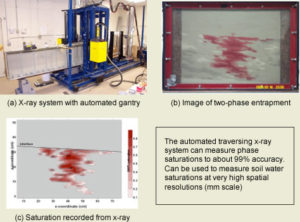
GC and HPLC Chromatography
The CESEP analytical laboratory is equipped with a variety of analytic instruments. Gas chromatographs are used to determine regular to trace amount different kinds of organic chemicals and chlorinated solvents. IC/HPLC Systems have both conductivity and UV detectors, capable to quantitatively analyze for different anions (Br-, PO43-, SO42-, Cl-, etc.) cations (Li+, Na+, NH4+ , K+, Ca+, Mg+ etc.,) and organic acids. With the UV detector, this system also is able to measure organic compounds (include: PAHs, PCE, TCE, etc.). This system have been routinely used for measuring Br and five basic anions (F-, Cl-, NO3- , PO43- and SO42- ) and six basic cations (Li+, Na+, NH4+ , K+, Ca+ and Mg+) of samples from column, 2D cell and 3D tank experiments.
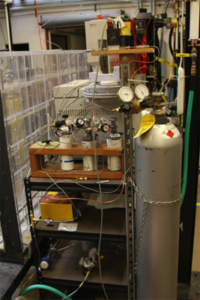
Intermediate Scale Test Systems (Synthetic Aquifers)
The test bed facility has a number of 2-D and 3-D tanks. Pre-fabricated tank wall units of dimension (8 ft x 4 ft) can be arranged up to 32 feet long.
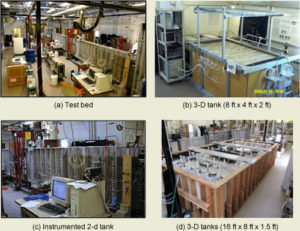
Coupled Climate Controlled Wind Tunnel and Soil Tank
Climate wind tunnel porous media test facility at the Center for Experimental Study of Subsurface Environmental Processes (CESEP) currently used in all aspects of our research. Facility allows us to simulate realistic climate boundary conditions at the land/atmospheric interface that we believe are critical for the study of near surface problems.
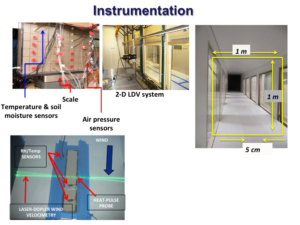
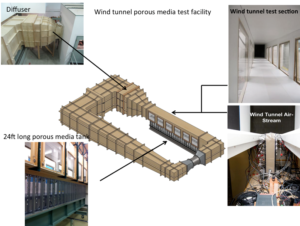
Components of the Wind tunnel
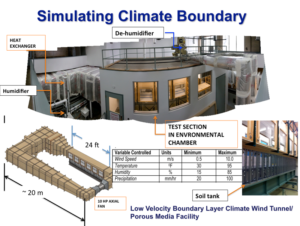
Simulating Boundary Conditions
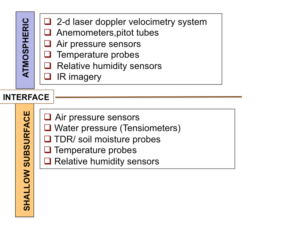
Instrumentations in Subsurface and Atmospheric Systems
Test Bed Facility for Wireless Sensor Network
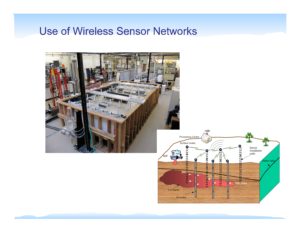
Three Dimensional Test Best for Wireless Sensor Networks